Contact us
Please leave your specific needs and contact information, and the staff will contact you as soon as possible!
Qiming Casting, a leading manufacturer of high manganese steel and alloy steel casting in China, is dedicated to providing superior quality mill liners for your grinding operations. With years of experience in the industry, we understand the demands of mining and mineral processing, and our products are designed to withstand the harshest conditions.
Our mill liners are specifically engineered for vertical roller mills, semi-autogenous grinding (SAG) mills, and ball mills. These liners are crafted from high-grade materials that offer exceptional wear resistance and durability, ensuring maximum service life and minimal maintenance.
Qiming Casting supplies a wide range of high-quality mill liners for vertical roll mills, semi-autogenous mills, and ball mills, with various optimized alloy recipes to deliver increased.
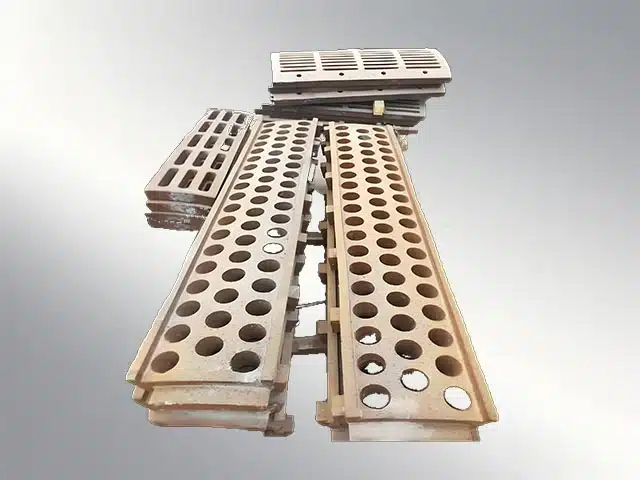
Grates allow smaller particles to exit the mill while retaining larger pieces for further grinding.
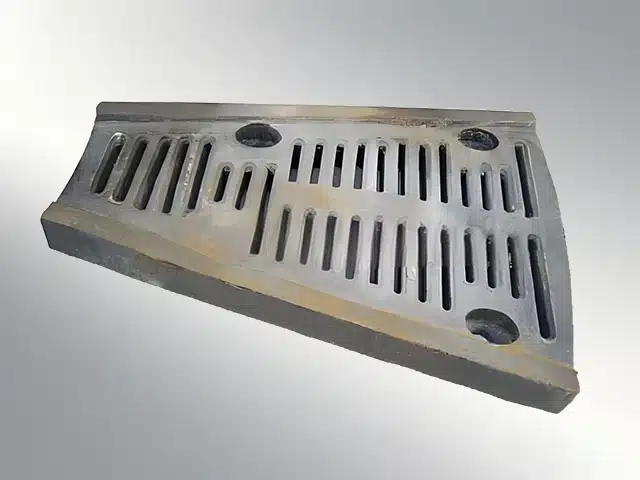
These help control the flow of ground materials out of the mill.
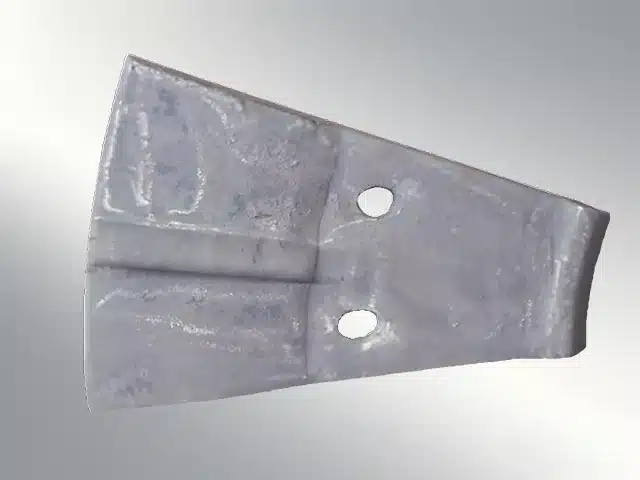
Feed end liners are designed to protect the shell of the mill from incoming materials.
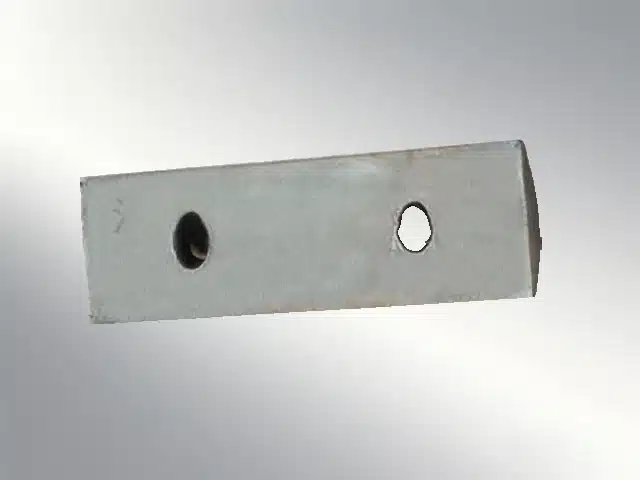
Lifter bars facilitate the lifting and falling of grinding media.
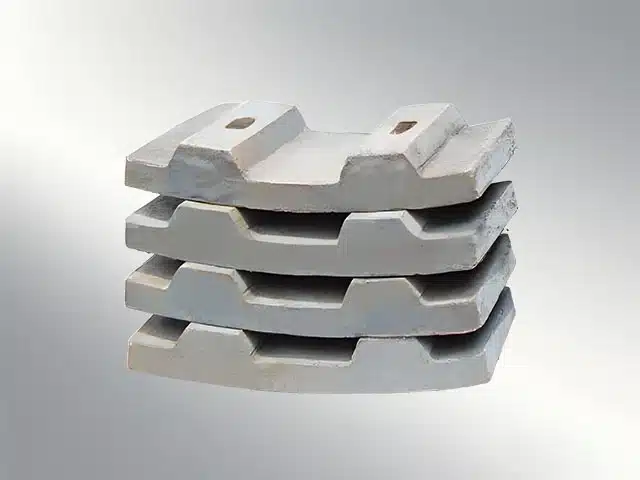
Shell liners are essential for protecting the shell of the mill from wear and tear caused by grinding media and mineral particles.

Grinding rollers and tables are the primary components responsible for grinding materials. The rollers are mounted on a shaft and rotate against the grinding table, which is lined with a replaceable, wear-resistant material. Due to the abrasive nature of the materials being ground, the rollers and tables are subjected to high wear.
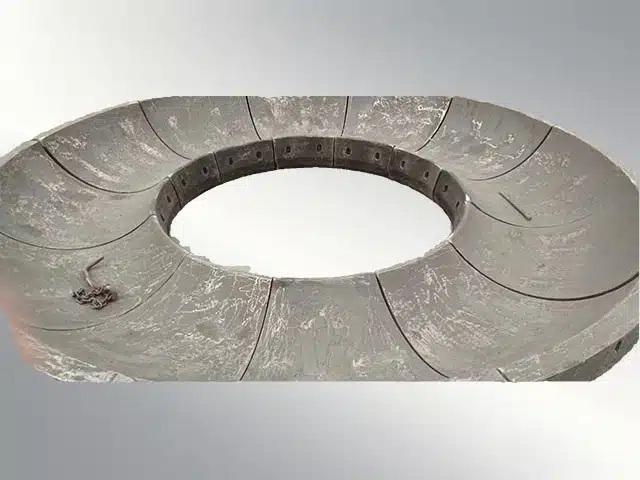
Grinding rollers and tables are the primary components responsible for grinding materials. The rollers are mounted on a shaft and rotate against the grinding table, which is lined with a replaceable, wear-resistant material. Due to the abrasive nature of the materials being ground, the rollers and tables are subjected to high wear.

The feed chute where the material enters the vertical mill is also susceptible to wear and tear, so it is usually protected with materials such as wear-resistant steel plates or ceramic patches.
Choosing the right material is the most effective way to extend the life of the mill liners. We not only provide standard wear parts but also provide redefining wear parts for customers.
Standard materials make standard wear parts.
| Material | Working Conditions | Suit Wear Parts |
| Manganese Steel (Mn14,Mn18,Mn14Mo,Mn18Mo) | This material is commonly used for grid liners and typically in smaller milling operations. A significant advantage of this material is its ability to work harden under stress, maintaining a tough substrate that can endure severe impacts without fracturing. However, its main drawback is that it tends to spread under the impact, causing solid liners to start pressing against each other and become challenging to remove. If the stress is permitted to accumulate to an excessive level, it can also lead to damage to the mill shell. |
|
| Low Carbon Chrome Moly Steel (300 to 370BHN) | This material was widely employed for mill liners (AG, SAG, and Ball) before the transition to steels with higher carbon content. It exhibits outstanding wear characteristics coupled with some level of impact resistance. Presently, it is frequently utilized for discharge grates, where a marginally superior impact resistance is demanded in comparison to the higher carbon chrome moly steels, or for liners of thinner cross-sections. |
|
| High Carbon Chrome Moly Steel (325 to 380BHN) | This steel is currently regarded as the primary material for SAG mill liners. There are several adaptations available, each with varying carbon or chrome contents. These variations often influence the size of the liner and the thickness of its cross-section. Continuous advancement is taking place in this field as the dimensions of the liners are surpassing the properties supplied by conventional high chrome moly steels. |
|
| High Chrome Irons (+600BHN) Cr Iron | It is considered to have superior wear abrasion characteristics and is generally used in rod and ball mills. It is more cost-competitive but more brittle than chrome moly white irons. |
|
| Chrome Moly White Irons (600 to 700BHN) WI | This cast material is considered to be the ultimate developed and used to date for abrasion resistance in Milling. It is commonly used in cement mills and some of the largest Ball Mills in the world and where performance has not been bettered to date. |
|
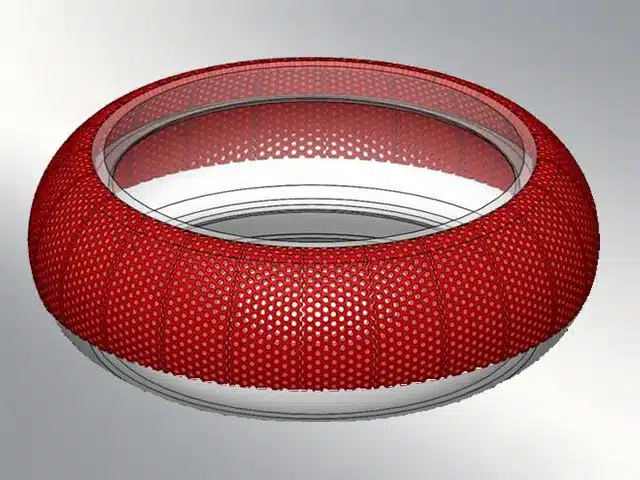
Ceramic grinding rollers are made of wear-resistant industrial ceramic particles (inlay) and high-chromium cast iron (matrix). They’re a new type of composite wear-resistant grinding roller produced through one-go pouring and casting technology.
Ceramic grinding rollers are considered the best wear-resistant solutions for vertical mills and are now widely used in cement, metallurgy, electric power, construction, mining, and other industries.